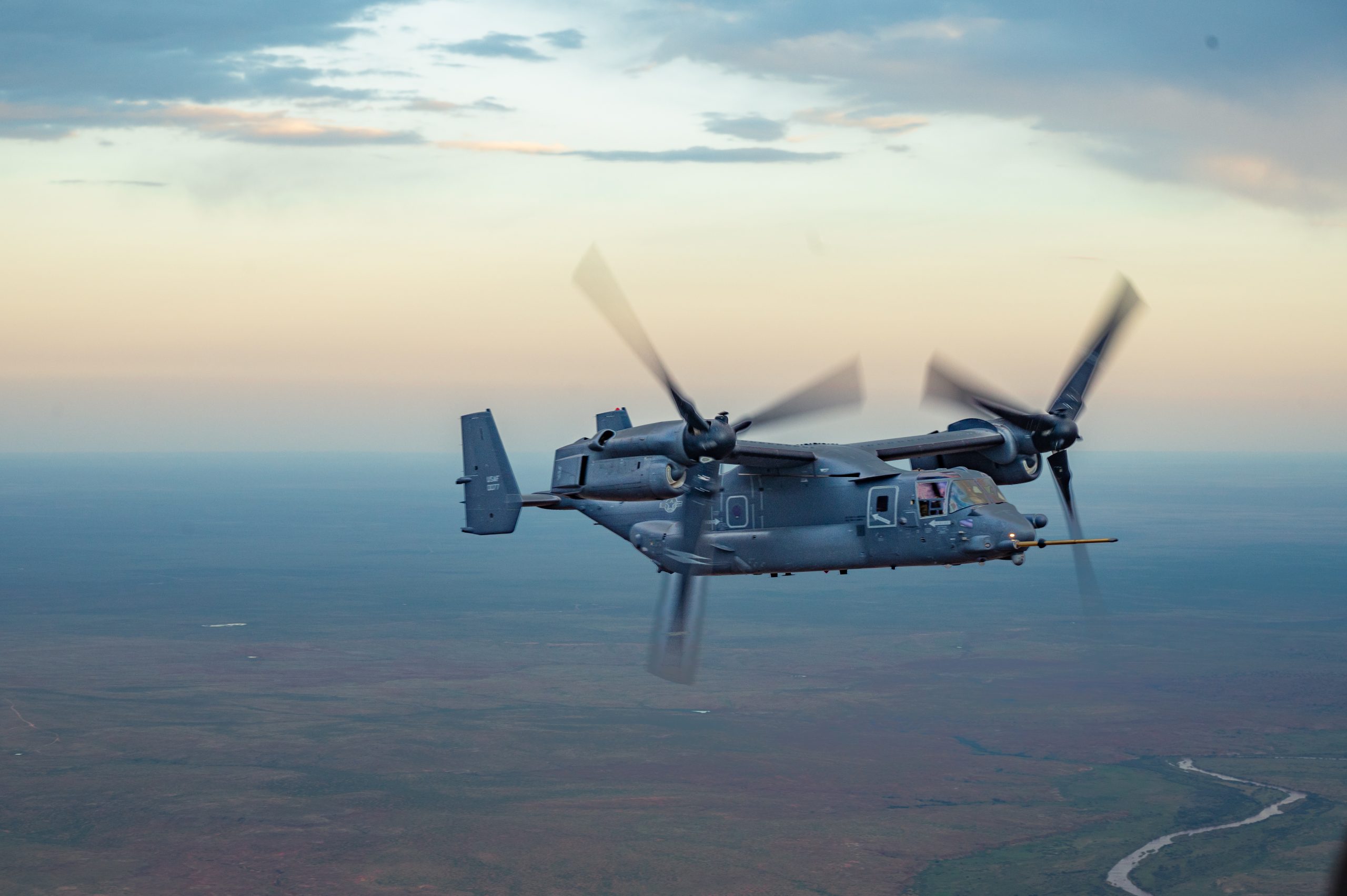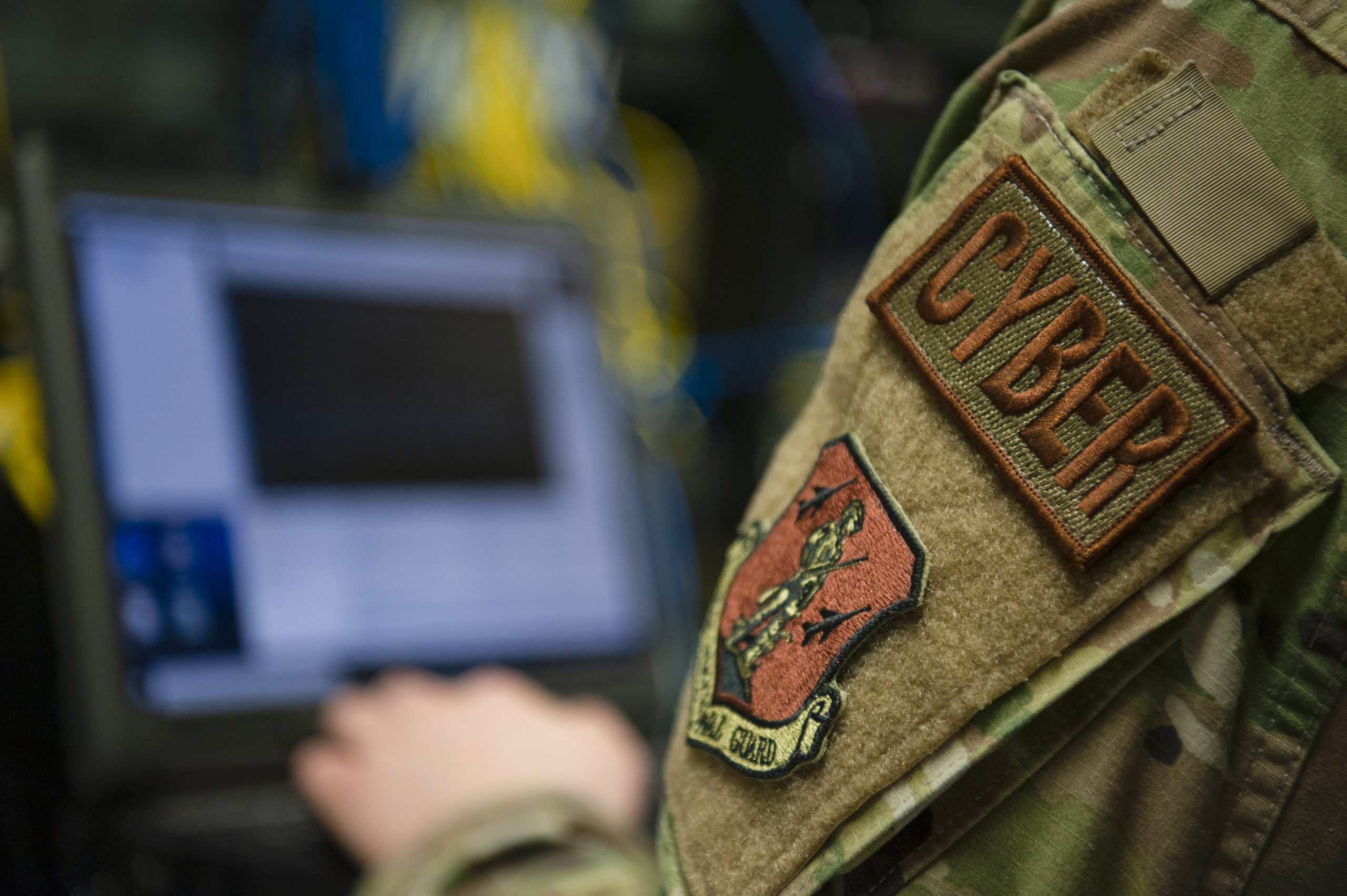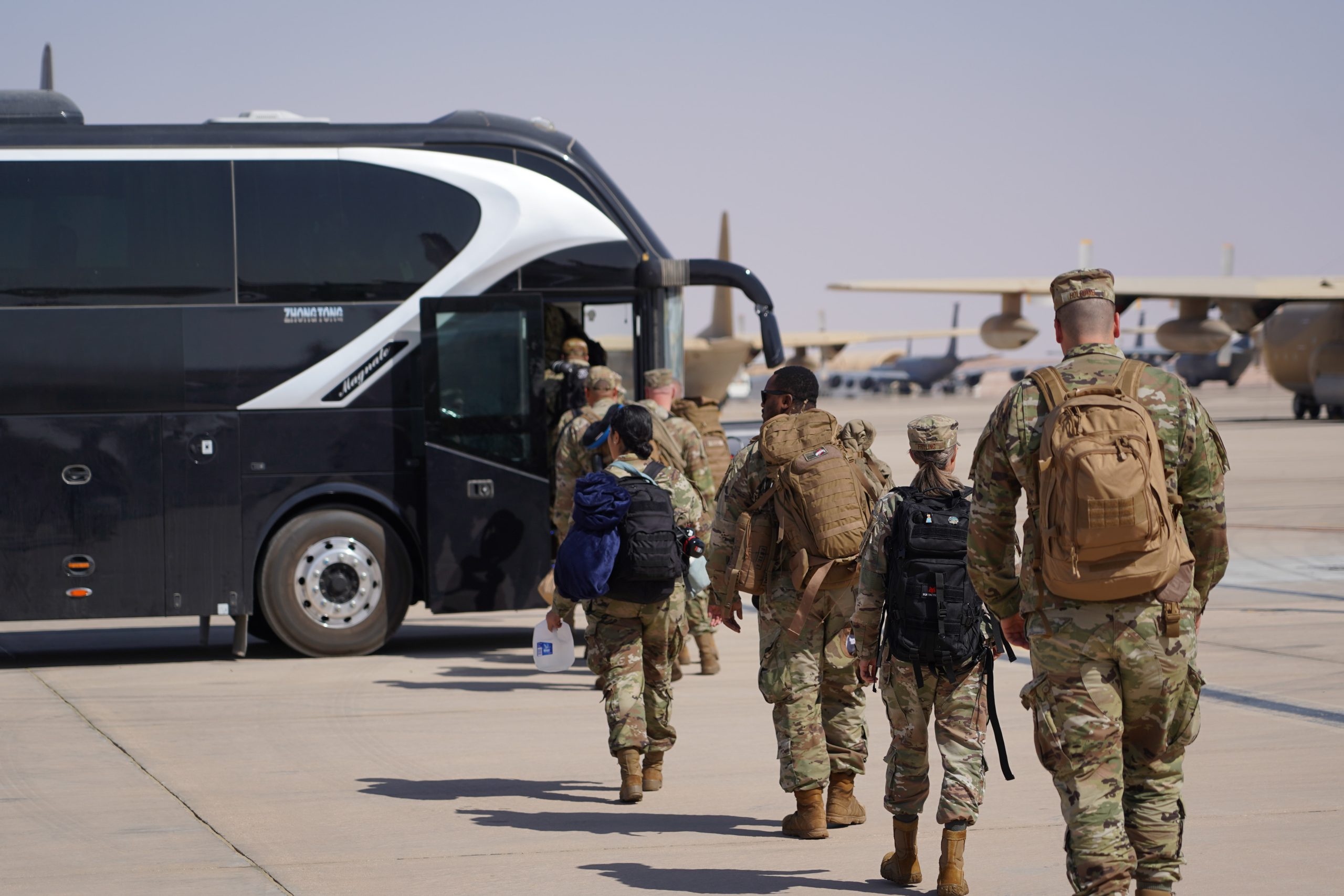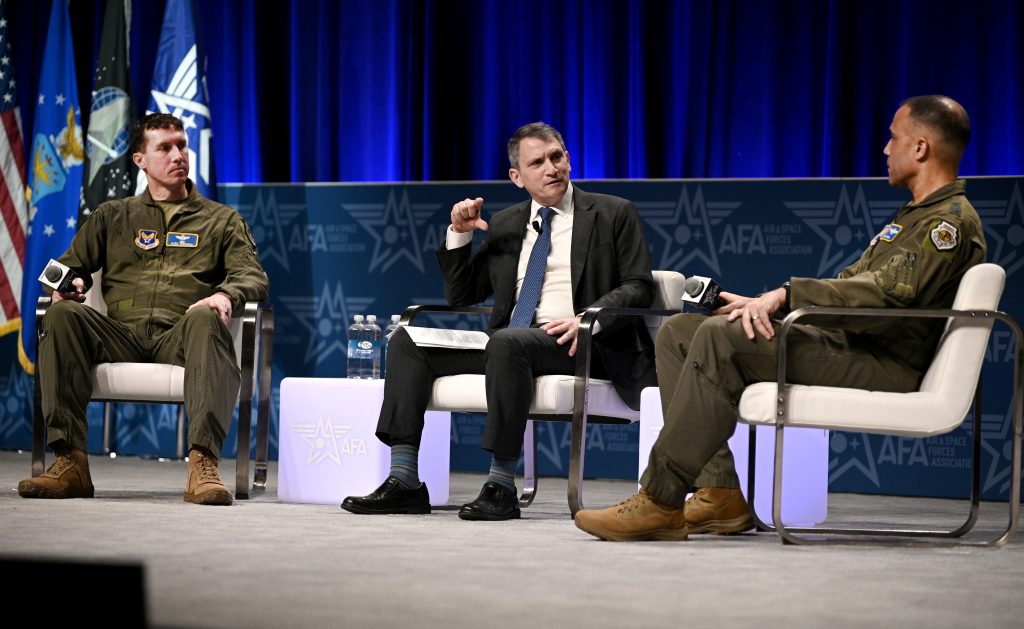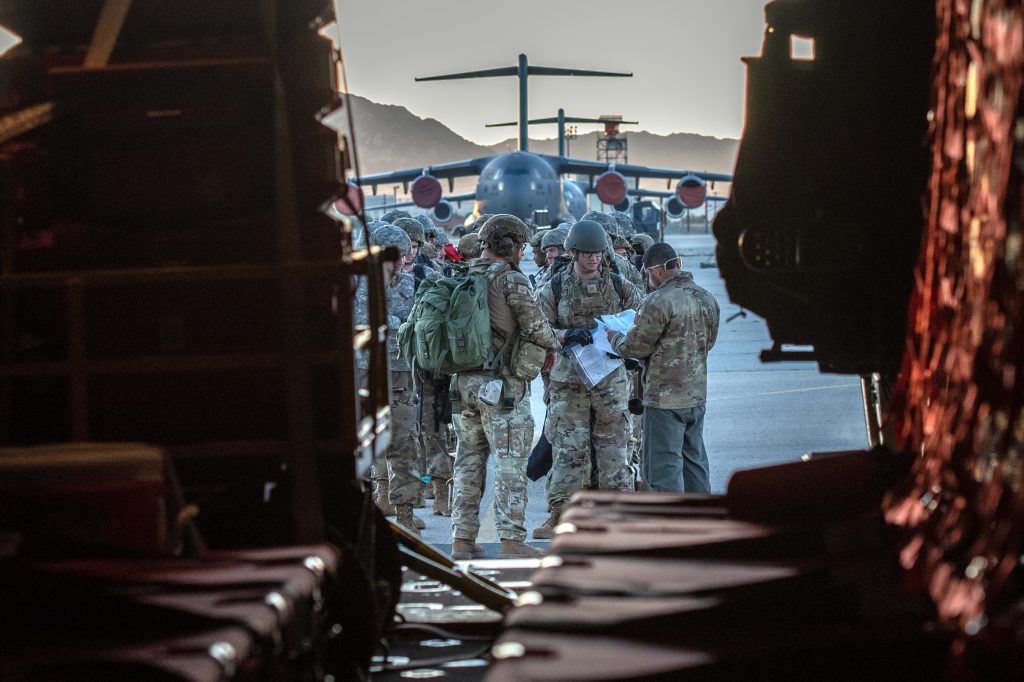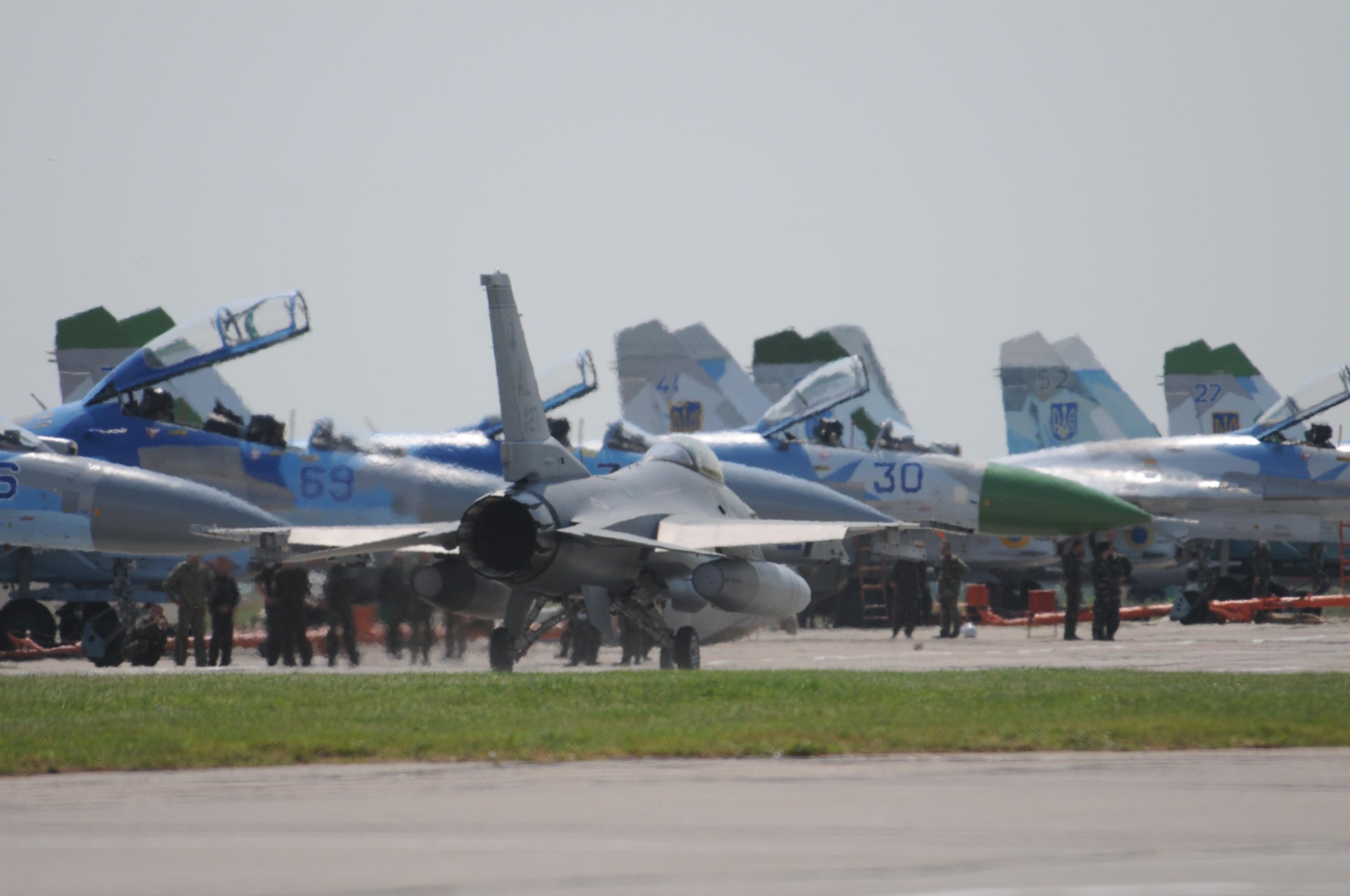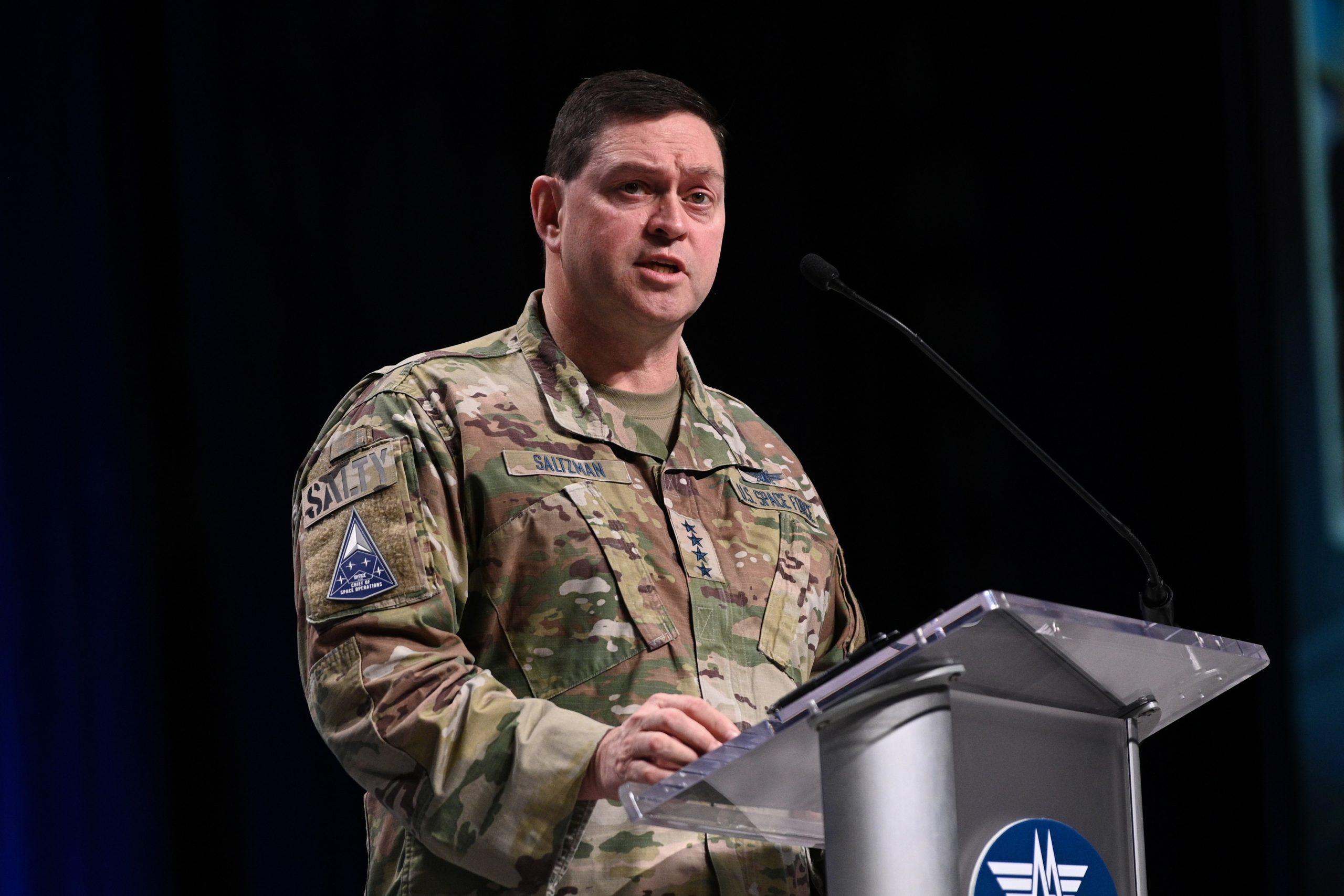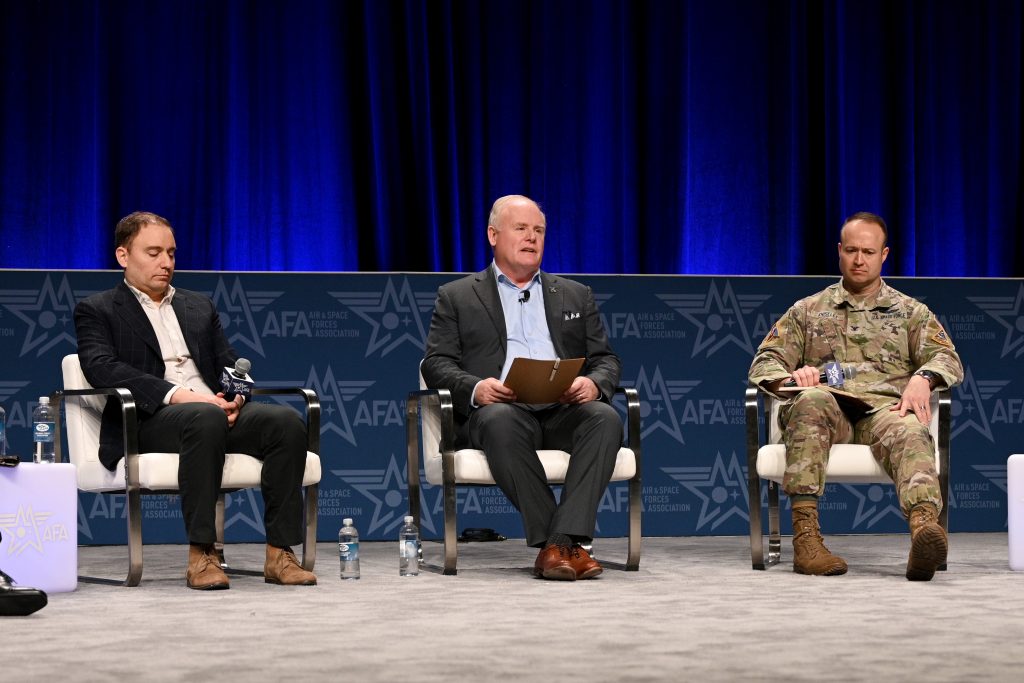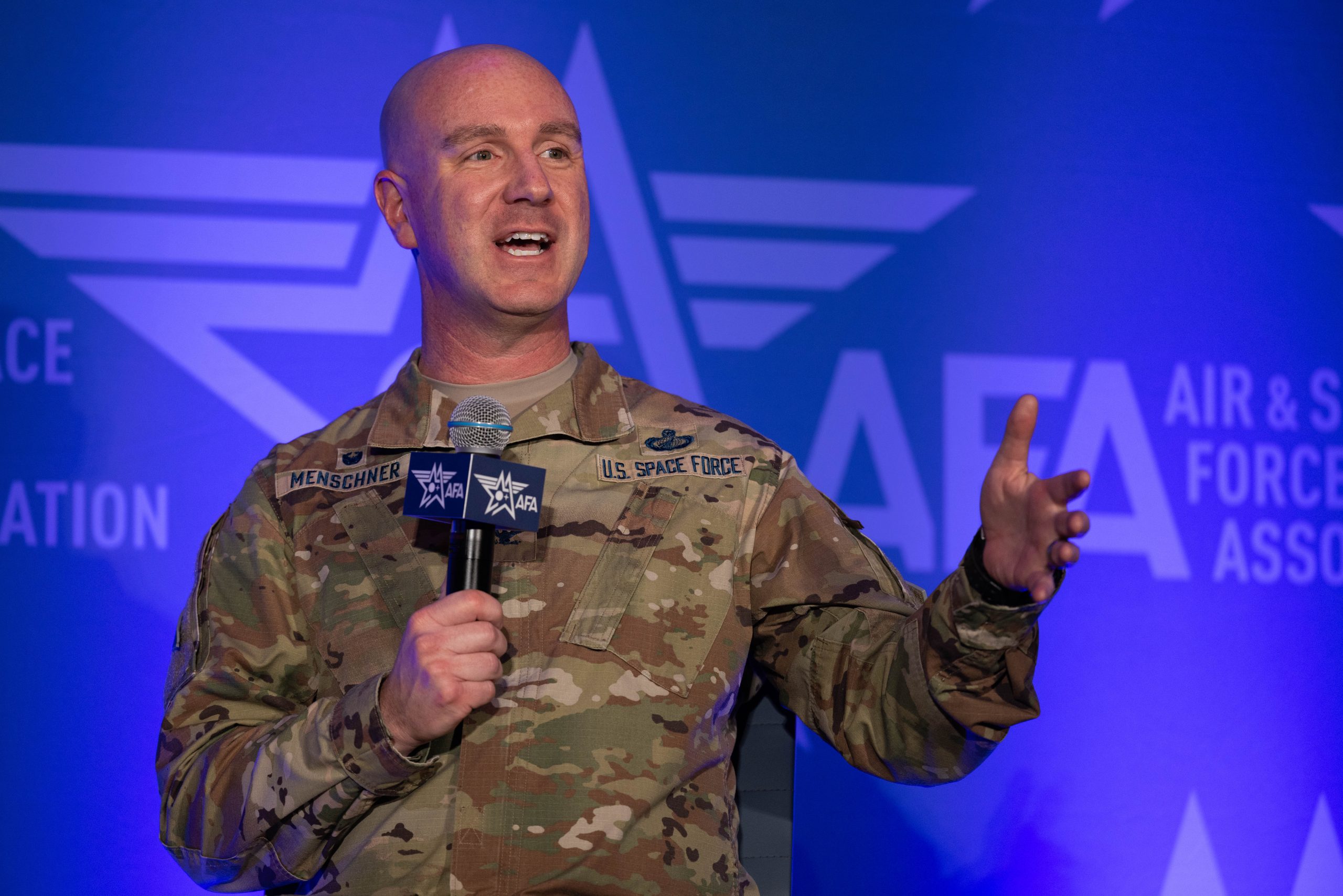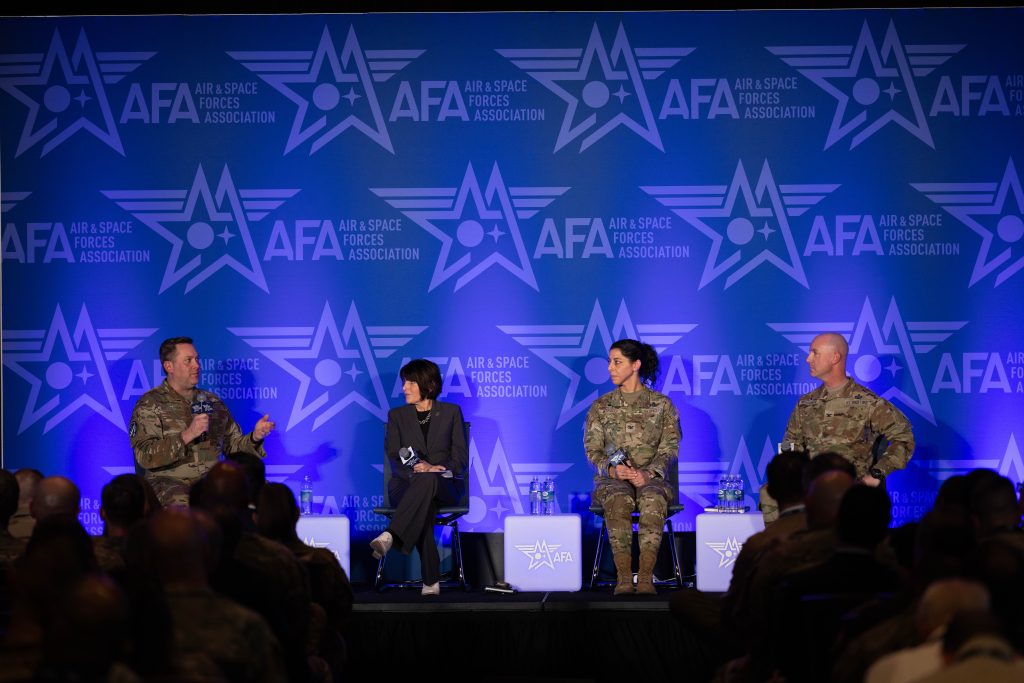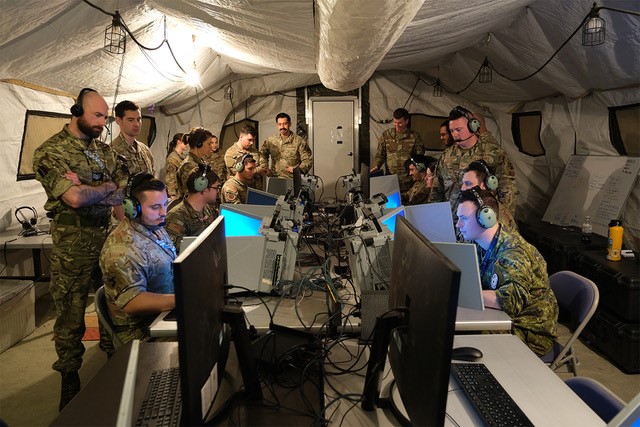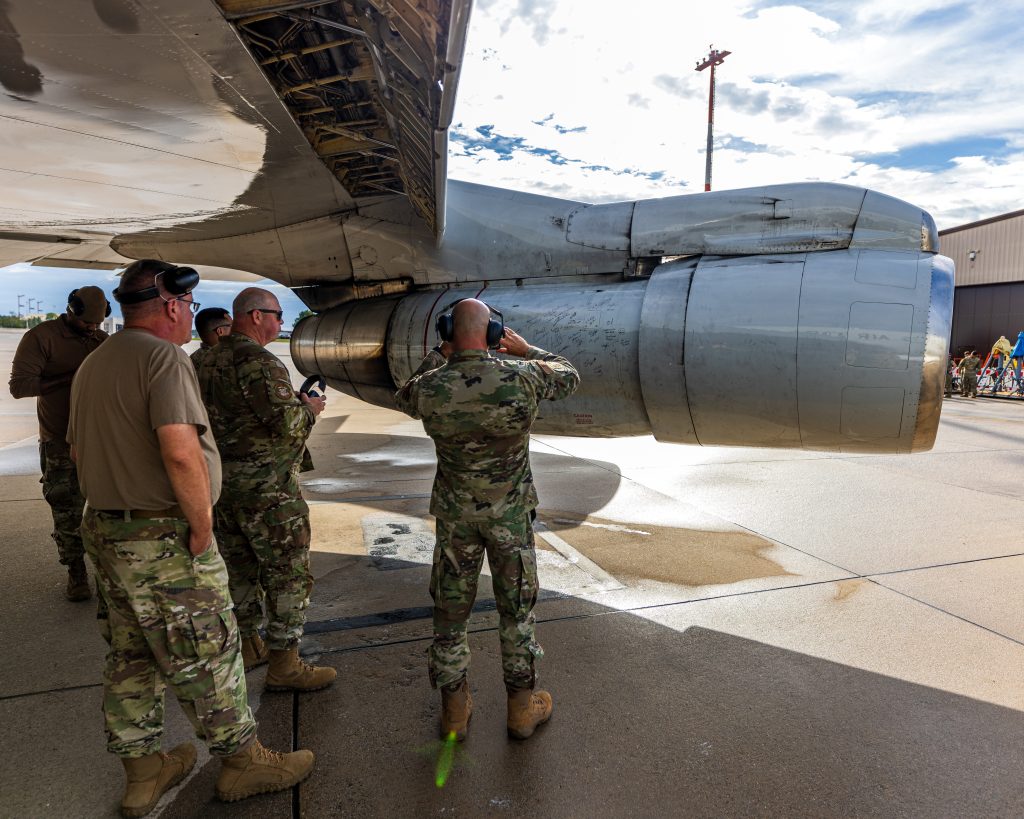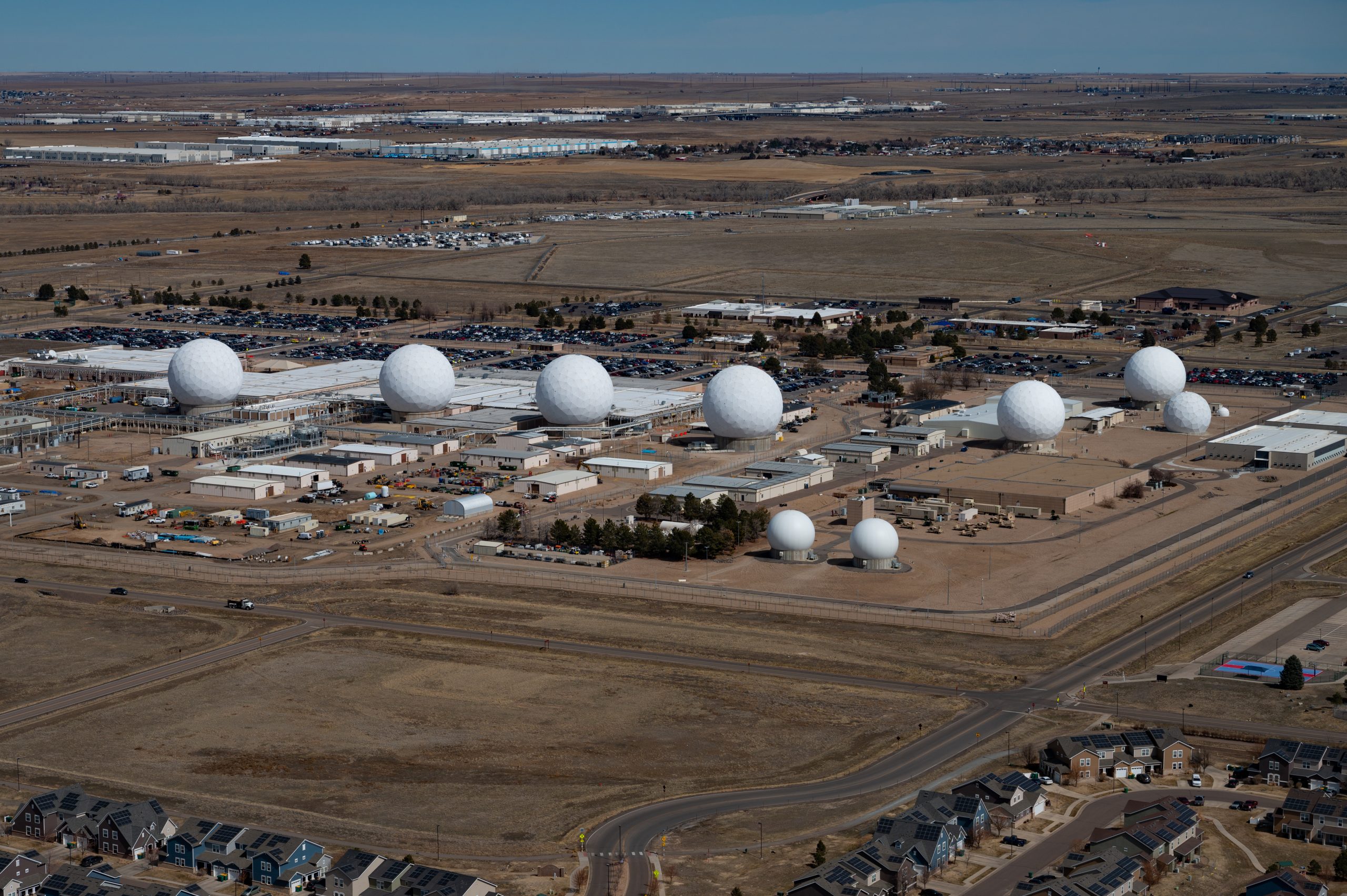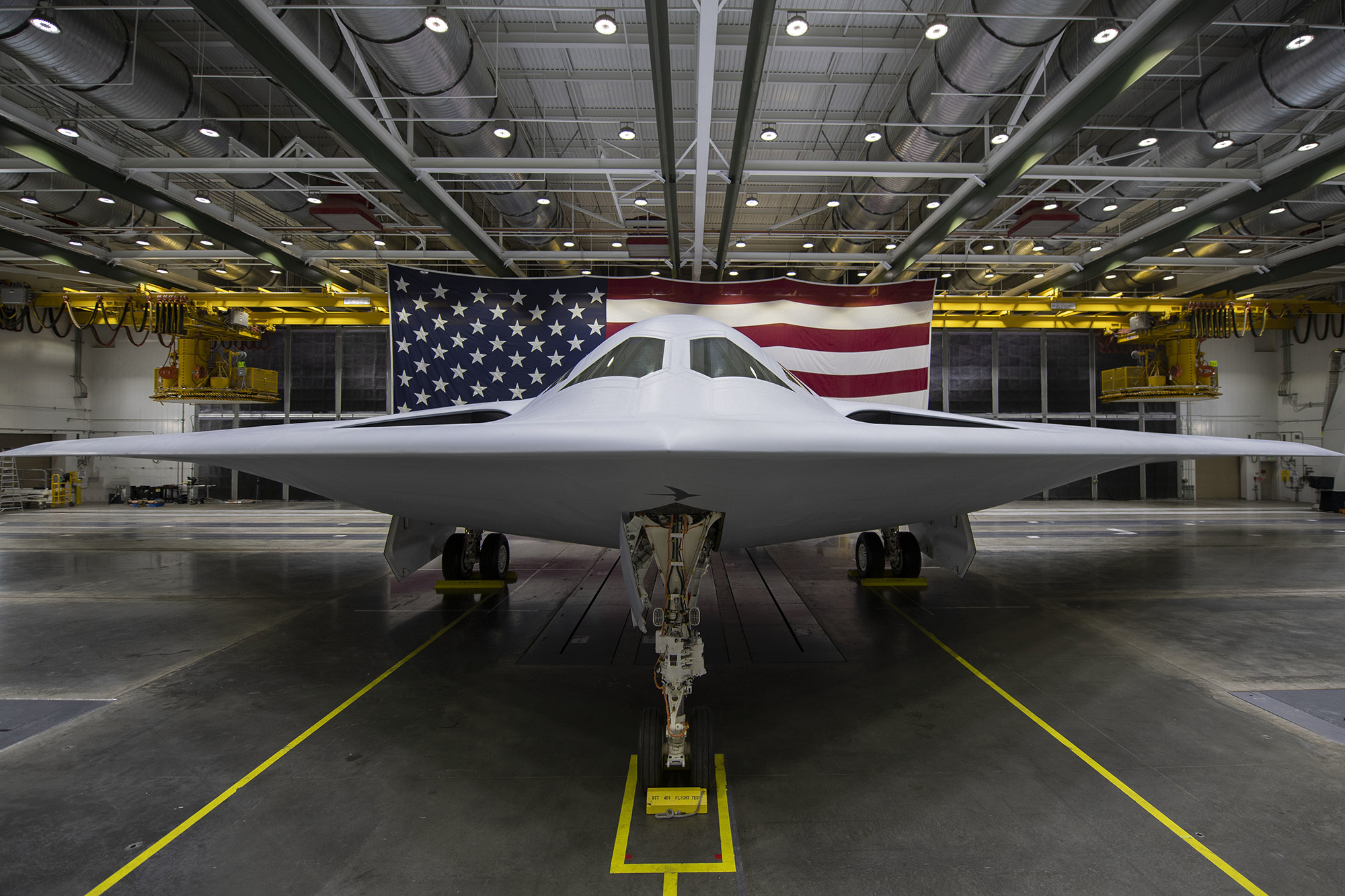Air Force Special Operations Command has determined what part failed in the CV-22 Osprey crash that killed eight Airmen in November—but is still determining why that failure occurred.
AFSOC announced the update to its review process on Feb. 20 after NBC News reported that investigators were looking into the possibility of a mishap with its propeller rotor gearbox that caused the deadly crash off the coast of Japan.
“At this time, the material failure that occurred is known but the cause of the failure has not been determined,” AFSOC’s statement read. “Engineering testing and analysis is ongoing to understand the cause of the material failure, a critical part of the investigation. Any disclosure of findings prior to investigations being finalized is premature and presumptive.”
AFSOC has previously said initial findings suggested a material failure, indicating pilot error was likely not the primary cause and there was an issue with the aircraft itself.
An AFSOC spokesperson declined to identify the material failure to Air & Space Forces Magazine.
AFSOC and Pentagon officials explained past incidents of “hard clutch engagement” with the Osprey, when the clutch slips and causes a fail-safe feature in the system to transfer power from one engine to the other, only for the clutch to then re-engage, generating enormous spikes in torque. The Air Force briefly grounded its fleet in 2022 because of such incidents, and the V-22 Joint Program Office said in February 2023 that it was imposing flight-hour limits on V-22 input quill assemblies.
The V-22 has been grounded across the Air Force, Navy, and Marine Corps for more than two months as numerous safety reviews and investigations play out. AFSOC alone is amid three different reviews related to the CV-22, commander Lt. Gen. Tony Bauernfeind said last week at the AFA Warfare Symposium:
- A Safety Investigation Board that will investigate the crash and provide findings to prevent future mishaps
- An Accident Investigation Board that will determine the causes of the crash and be released publicly
- A broader review centered on the question, “Is the CV-22 force appropriately organized, trained, and equipped for safe, effective, and efficient special operations?” Bauernfeind said.
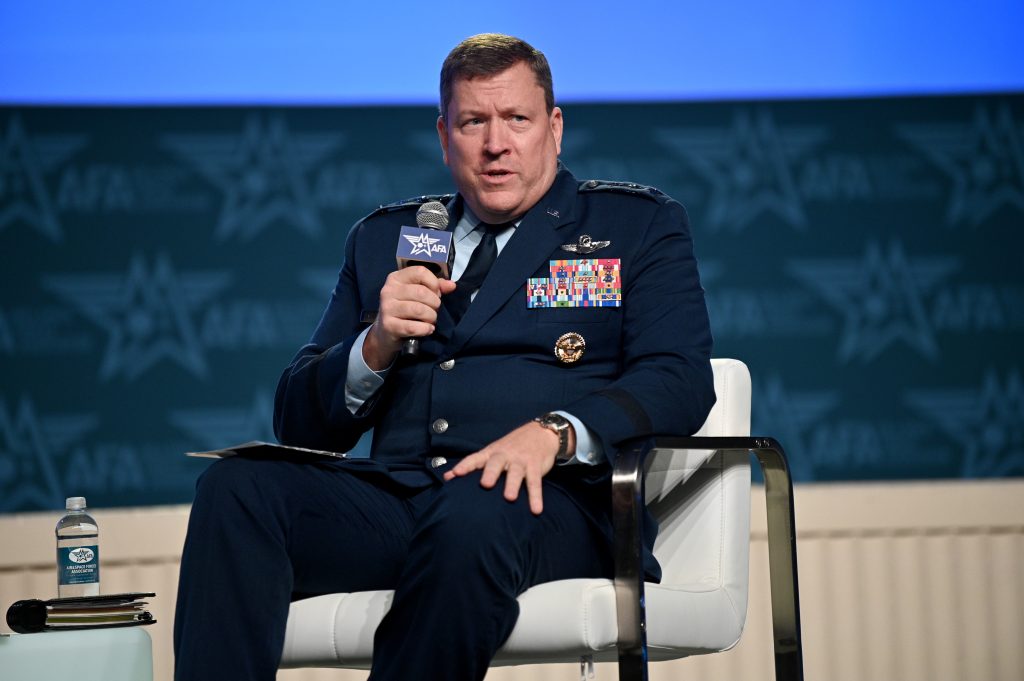
NBC News reported that military officials expect the V-22 to possibly return to flight operations within the next few weeks. Still, while Bauernfeind acknowledged that “there is a strong desire to return to fly because this is a capability we want to have,” he also said the Air Force will be deliberate in its approach.
“When we make that decision to return to fly, it will be with me having full confidence not only in our training but our crews, as well as the platform and new mitigation measures that we have in place to ensure that we can react appropriately if another situation develops,” he said.
Referencing weekly discussions with top Navy and Marine aviation leaders, Bauernfeind indicated that the necessary mitigation measures are still being developed.
“What is the information we need to now put the appropriate risk mitigations in place as we go forward?” he said. “But just because we’re having those conversations does not mean that you have the information you need yet.”
In the meantime, “we have conversations with the operational commanders about the way forward and they have leveraged other joint force capabilities to meet their requirements,” Bauernfeind said. However, he declined to identify what platforms those were.
Naval Air Forces commander Vice Adm. Daniel Cheever acknowledged at least one aircraft that has been used to cover the operational gap left by the V-22: “Lucky for the Navy, the C-2 Greyhound is still available,” he said Feb. 13 at the WEST 2024 conference, according to USNI News. The Marine Corps Times reported in December that the service was using UH-1Y Venom and CH-53E Super Stallion helicopters, as well as KC-130J Hercules transport planes.
The Air Force has HH-60 helicopters, as well as multiple types of C-130 aircraft used for different special operations missions.
The CV-22 offers unique capabilities—with its distinctive tiltrotor, it can take off and land vertically like a helicopter but pivot and fly faster like an airplane once in the air. But Bauernfeind said through the course of the recent safety reviews, “there is an acknowledgment that the V-22 is 1980s technology.”
“There’s been upgrades to this technology that was basically developed in the 1980s,” he added. “And as we move forward, what are the future capabilities that will eventually provide the next generation of capability?”
The Defense Advanced Research Projects Agency (DARPA) and U.S. Special Operations Command are working on a project called Speed and Runway Independent Technologies, meant to design, build, and fly an X-plane that would refine the next generation of technology needed for a V-22 successor. Bauernfeind noted, though, that it can take years for a DARPA project to transition into meaningful production.
The Army is also developing a tiltrotor aircraft for its Future Long Range Assault Aircraft program. Service leaders selected Bell’s V-280 Valor design in late 2022. Bell also produces the V-22.
